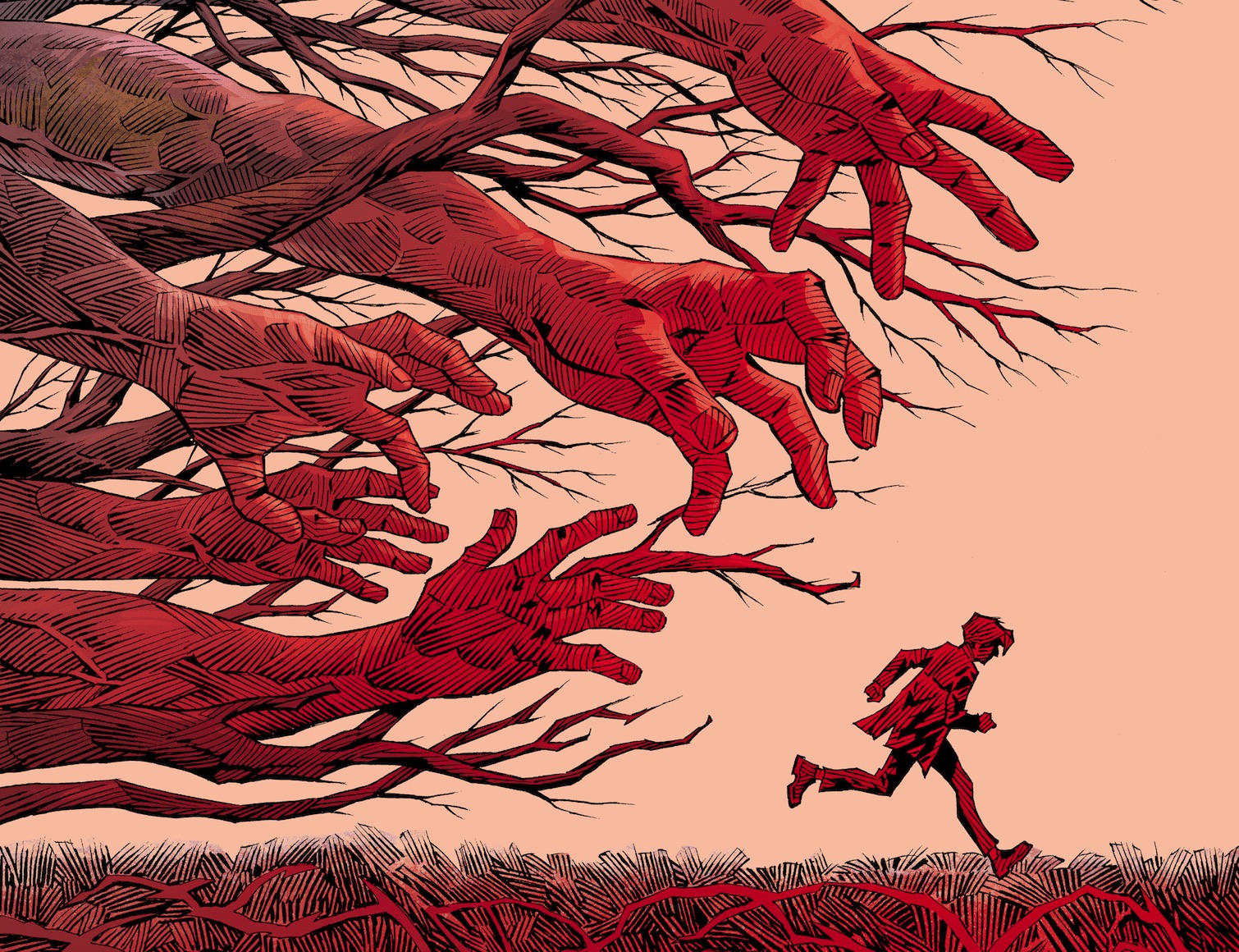Peter Milligan has experience telling stories of great intrigue, elevating the ordinary through the extraordinary with supernatural titles like Shade, The Changing Man and Out of Body. His stories reinvent the norm, and God of Tremors is no exception.
The one-shot story follows Aubrey Clarke, a child living in 19th century Victorian England under the strict rule of protestant Christianity, as he experiences his first seizure and navigates the aftermath. Issues of domestic abuse, suicide, and god-fearing exorcism follow him and lead him to discover the God of Tremors deep in the forest near his abusive father’s estate.
It’s a deeply personal story — Milligan is epileptic himself, and after suffering a series of seizures said that God of Tremors “came fully into focus.” Not being epileptic myself I cannot truly empathize with his experiences, but it’s not required when they’re explained and illustrated in such gripping detail. One of Piotr Kowalski’s panels where Aubrey is shown falling through a crack in the earth depicts these episodes as I imagine they are felt: world-bending and catastrophic. The secondary themes of bigotry and oppression also give the reader equally compelling points to latch onto that are cognizant of modern times.

AfterShock Comics
However, some of the supplementary themes get a bit lost due to the sheer number of them. Ones like desire and secrets are present enough to be perceived in God of Tremors ,but feel like they’re a whole separate exploration. They add a flavor to the plot but take away some of the strength of the main spices.
Though, the use of lines in Kowalski’s art is a stunning complement to the story. Much like on the cover of God of Tremors, tree limbs are accentuated to mimic nerve endings and carefully contrast the hard, straight edges of Victorian architecture and design. Kowalski’s shading is particularly cognizant of this, a straight hatching style that adds perfect dusk and structure to the images.
The rigid rectangular panelling also matches the strictness of the era God of Tremors takes place in, but the offset and white space surrounding some of the panels adds to the unsettling nature of this strictness. Similarly, Simon Bowland’s unique angular narration boxes are reminiscent of torn parchment paper in both color and shape, adding to the Victorian aura while remaining rigid.

AfterShock Comics
Brad Simpson’s colors make sure to recognize both the drab and delightful spectrum of Victorian England. Shades of browns represent building interiors and male attire while shades of blues paint the gloomy and intriguing exterior scenes. Warm and alarming reds, oranges, and yellows aptly fill scenes relating to seizures or the God of Tremors, serving as a disruption to the scheme. A two-thirds splash panel at the climax of the story deliciously melds these cool and warm schemes together for a well-deserved character moment.
However, if you’re looking for a sprawling tale full of scintillating supernatural scope, you won’t find it in this story. The pagan entity that Aubrey is haunted by and finds solace in often plays second fiddle to the spectacle and results of his father’s brutality, and doesn’t visually come to life in full force until the climax of the story. But this isn’t necessarily a downside, the God of Tremors is as much a mystery as the condition it’s representing. Though the final page’s surprising, yet inevitable twist makes you rethink the entire comic and leaves you wanting to know more about the supernatural side.
A seething, thematic gothic exploration of epilepsy in the brutal context of god-fearing 19th century England that aptly mirrors the present, God of Tremors adds another hit to Milligan’s library of horrific wonder.
Join the AIPT Patreon
Want to take our relationship to the next level? Become a patron today to gain access to exclusive perks, such as:
- ❌ Remove all ads on the website
- 💬 Join our Discord community, where we chat about the latest news and releases from everything we cover on AIPT
- 📗 Access to our monthly book club
- 📦 Get a physical trade paperback shipped to you every month
- 💥 And more!














You must be logged in to post a comment.